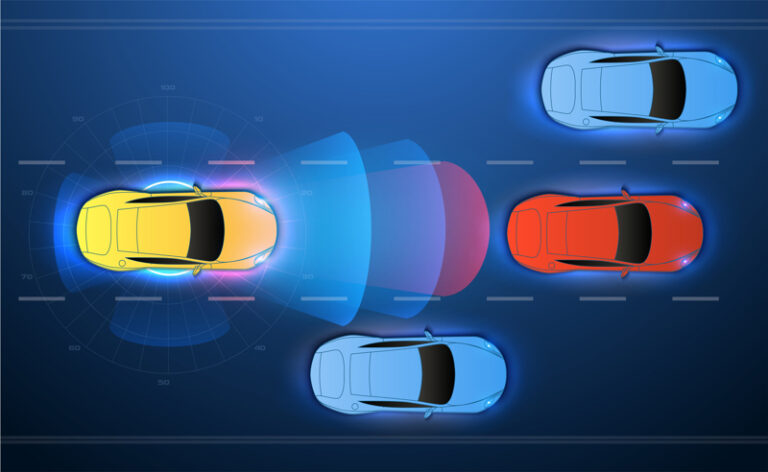Prioritizing Safety: How Advanced Driver-Assistance Systems Are Reshaping Fleet Management
Ensuring driver and vehicle safety is a cornerstone of effective fleet management. Maintaining a safe fleet involves a multi-faceted approach, including utilizing the latest safety technologies, regular vehicle inspections, and consistent maintenance practices.
Historically, safety advancements centered on minimizing occupant injuries during a collision, such as airbags and crumple zones. However, the advent of advanced driver-assistance systems (ADAS) has shifted the focus towards preventing accidents altogether.
“Increasingly technological systems are helping us to achieve an even better outcome – avoiding the crash in the first place,” notes Nick Reed, founder of Reed Mobility.
Early examples of these systems include anti-lock brake systems (ABS) and electronic stability control (ESC). Such systems are often described as ‘passive,’ as they operate in the background and may not be immediately apparent to the driver until needed. ADAS technologies, however, employ cameras and advanced sensors to gather more data, making them ‘active’ by intervening to mitigate collision risks.
These active interventions can involve providing visible or audible warnings or taking direct action, such as applying the brakes or adjusting steering. While designed to improve safety, these systems can potentially cause confusion for some drivers.
“Although designed to support safety, they may work in ways that a driver might consider surprising, or even annoying,” notes Reed. “Crucially, these systems may conflict with the driver’s mental model of how their vehicle should operate, as it may be outside their previous experience or training, unlike simpler systems that operate only in emergencies. It is therefore important that drivers are aware that such systems are fitted to the vehicle, and where and how they may intervene to support safe driving.”

Research suggests that some drivers may be inclined to disable these systems. A study by Axa and the road safety charity Brake found that 41% of drivers had deactivated safety features in their vehicles because they found them irritating, and many did not perceive them as enhancing safety.
Despite this, the Parliamentary Advisory Council for Transport Safety (PACTS) identifies vehicle safety technology as “the single most important means of preventing and mitigating serious injuries in motor vehicle crashes and the most efficient means of reducing deaths and serious injuries in road crashes.”
PACTS estimates that the widespread adoption of ADAS technologies would save 1,700 lives and prevent 15,000 serious injuries over a 16-year period. Real-world studies, including a recent report from the Insurance Institute for Highway Safety in the US, show autonomous emergency braking (AEB) can reduce injury claims by as much as 35%. These systems utilize sensors to detect hazards and automatically apply the brakes in emergencies—for instance, when a pedestrian steps into the road or a vehicle ahead suddenly stops.
Intelligent Speed Assistance (ISA), which uses GPS and cameras to monitor speed limits, can reduce injury accidents by 29%.
In 2022, the European Union implemented the Vehicle General Safety Regulation, mandating certain safety features in new vehicles. Mandatory features, in addition to ISA and AEB, include:
- Reversing detection with camera or sensors.
- Attention warning which monitors head and eye movements for signs of driver distraction or drowsiness.
- Emergency stop signal to alert the driver behind by making brake lights blink if a vehicle brakes sharply.
- Lane-keeping assist to alert a driver if their car strays too close to lane markers and either turns the steering wheel or applies the brakes on one side of the vehicle to keep it in lane.
- Event data recorders to gather data about driving behaviour which can be accessed in the event of a collision.
While these safety technologies are available on vehicles in the UK, the government has not yet adopted the EU’s policy following its departure, despite pressure from road safety organizations. “We urge the Government to look at the evidence, listen to the overwhelming call for safety, and follow Europe’s lead by making these safety features mandatory for all new vehicles in Britain,” says Brake CEO Ross Moorlock.
Compounding the challenges, vehicle manufacturers often use different names for the same ADAS technology. For example, Mercedes-Benz brands ISA as Speed Limit Pilot, while Volvo calls it Automatic Speed Limiter; Audi refers to AEB as Pre Sense City and Kia as Forward Collision Avoidance Assist.
Brake recommends that fleets adopt policies requiring the acquisition of vehicles equipped with specific ADAS technologies. A proactive approach is exemplified by Murphy Plant, which equips all its small vans with AEB. “This incorporated a change of vehicle that was more expensive, but the business agreed this was outweighed by the safety element to our employees,” explains Tony Murphy, fleet manager at Murphy Plant. “The autonomous braking is now standard on all new vehicles procured and this will help in reducing incidents.”
The Euro NCAP (New Car Assessment Programme) safety rating scheme is also used by fleets, setting a minimum standard for vehicle safety. The Euro NCAP’s testing protocols are updated to reflect advances in automotive technology, with increased emphasis on active safety measures designed to prevent and mitigate collisions, including protecting vulnerable road users. The assessment includes both occupant protection and post-crash rescue information and is rated on a five-star system.
Author: Andrew Ryan Features editor [email protected] 01733 468308 Andrew Ryan is the features editor at Fleet News. He has been a journalist for more than 20 years and has specialised in the fleet industry for the past 12.



